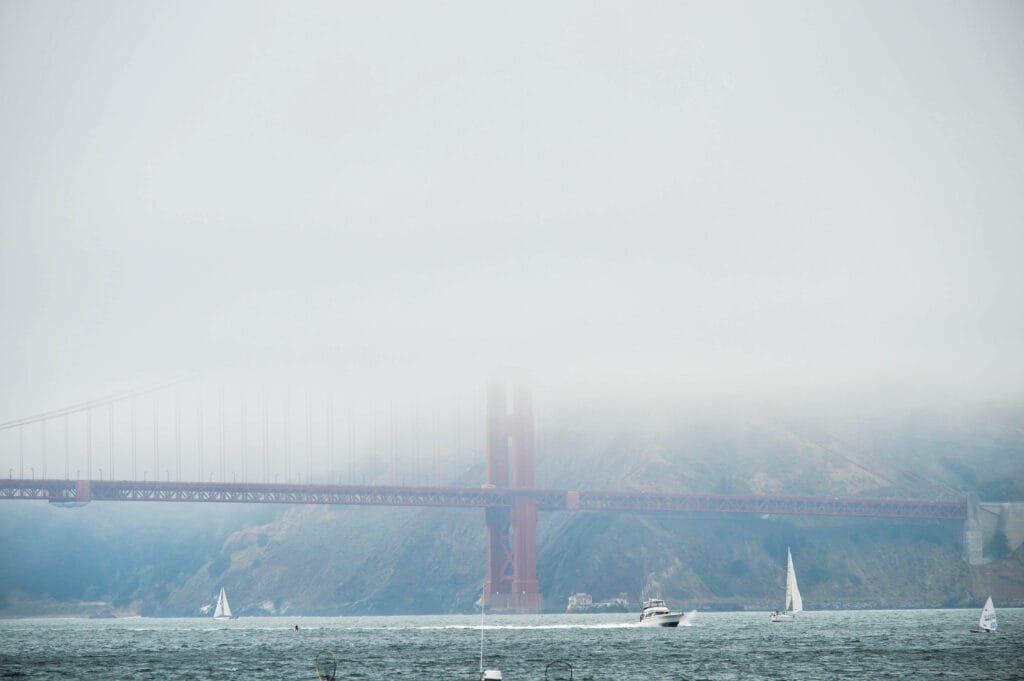
One of San Francisco’s most iconic features is its fog. The city’s unique marine layer not only keeps the city chilly while its inland neighbors sweat it out, but it’s also a local celebrity. However, recent studies suggest that California’s coastal fog might be, like so many other San Francisco celebrities, getting evicted.
Not even Karl can afford it here.
SF’S fog, which some people call Karl, typically makes its grand entrance during the summer. Thanks to a seasonal high-pressure system over the Pacific, the winds stir up cold ocean water, and voilà—a perfect setting for fog to make its appearance. Marine air cools over the chilly sea, condenses, and forms the elusive fog banks that locals love.
Rachel Clemesha, a climate scientist at UC San Diego’s Scripps Institution of Oceanography, compares predicting fog to trying to juggle flaming torches on a unicycle. “There’s so many scales at play, from the chemistry in the raindrop to global circulation,” she says. Sounds like fog’s got its own complex choreography.
In 2010, UC Berkeley’s Todd Dawson and his team reported a decline in summertime fog across Northern California using airport data from Arcata and Monterey. The news spread like wildfire, making many wonder if their favorite summer fog was taking an extended vacation. U.S. Geological Survey scientist Alicia Torregrosa then formed a “fog brain trust” to investigate further, because if anyone was going to solve this mystery, it was going to be a team of fog enthusiasts.
The 2010 study’s fog data came from just two airports.
In SoCal, fog hasn’t been getting rave reviews either. A 2015 study showed a decline in early morning fog in cities like Santa Barbara, Los Angeles, and San Diego. The culprits? Urban heat islands—those pesky concrete and asphalt that absorb and re-radiate heat, making it tough for fog to form.
Also, a 2011 study hinted that cleaner air might be to blame. Fewer pollutants mean fewer tiny particles for fog to cling to.
Fog isn’t just a cool weather feature; it plays a supporting role in ecosystems. Redwood forests, for instance, get up to 35-40% of their annual water from fog. Think of it as nature’s sprinkler system. If fog decides to take a permanent leave of absence, these majestic trees could face a tough time.
And let’s not forget agriculture. Sara Baguskas from San Francisco State University discovered that fog is a friend to strawberry plants. Farmers might need to start planning fog vacations or find ways to incorporate this misty helper into their irrigation plans.
I’ve always found the name “Karl the Fog” to be annoying, but I hate everything, so who cares? The last thing I want San Francisco to lose is its fogginess.
So, I humbly ask… Can San Francisco keep Karl?
SUBSCRIBE TO MY SUBSTACK HERE
FOLLOW MY WRITING ON INSTAGRAM HERE
FOLLOW BAY AREA MEMES ON FACEBOOK HERE
FOLLOW BAY AREA MEMES ON INSTAGRAM HERE
PURCHASE MY BOOK HERE
The post San Francisco’s Iconic Fog Is Vanishing, and It’s a Huge Deal appeared first on Broke-Ass Stuart's Website.









